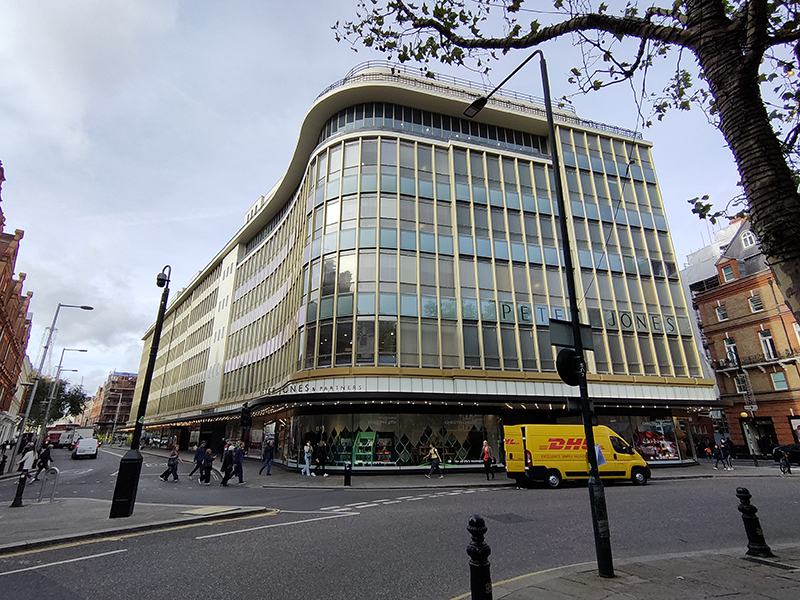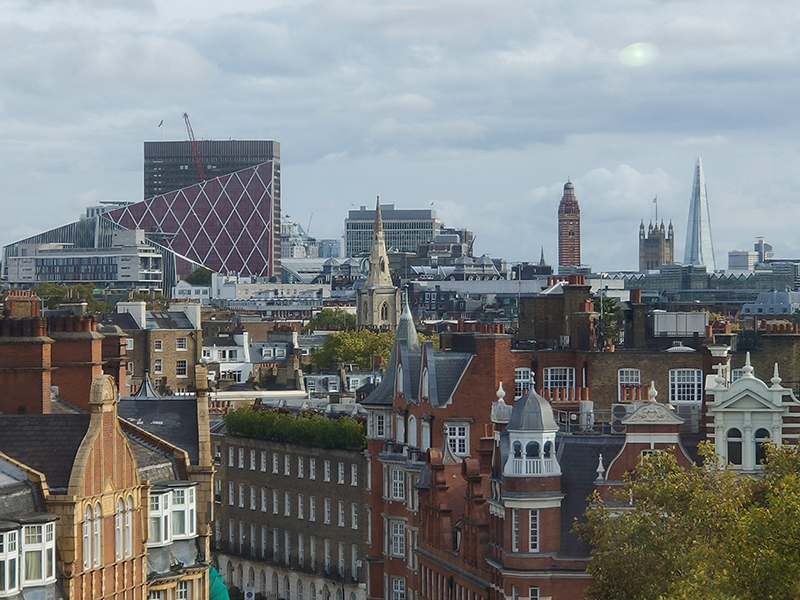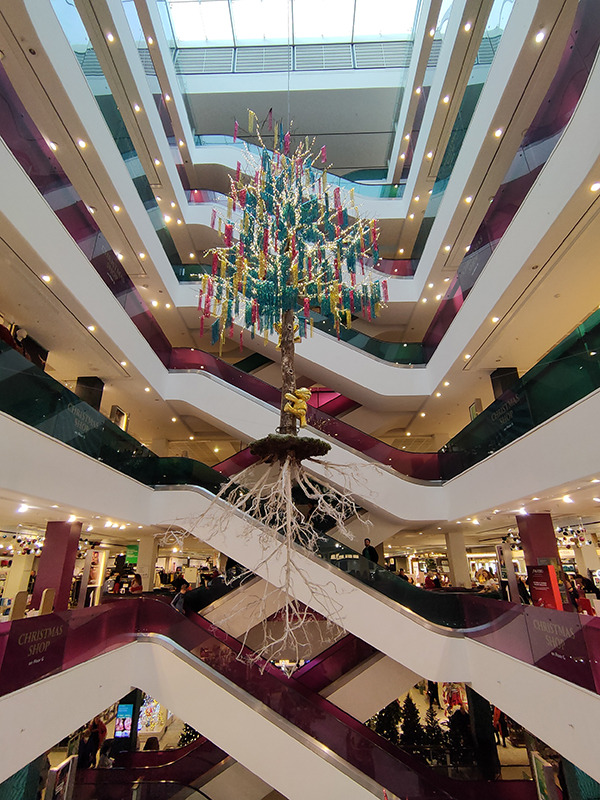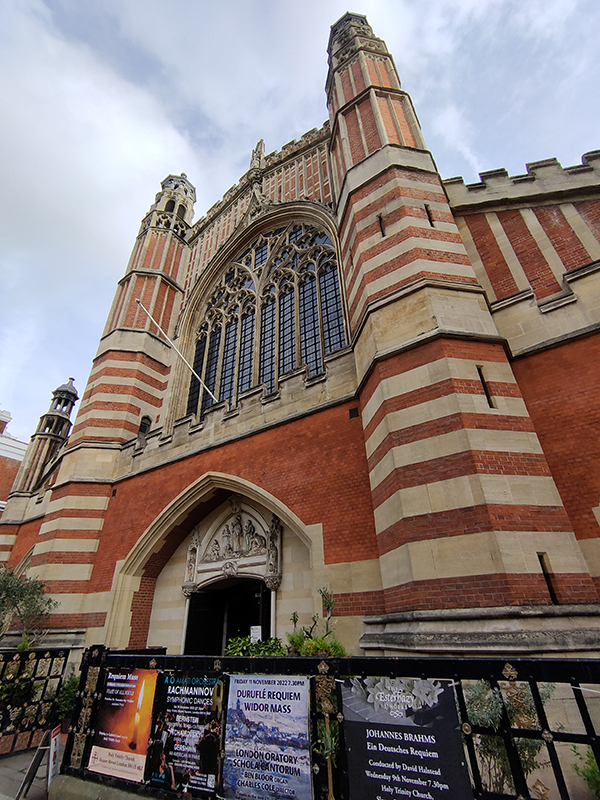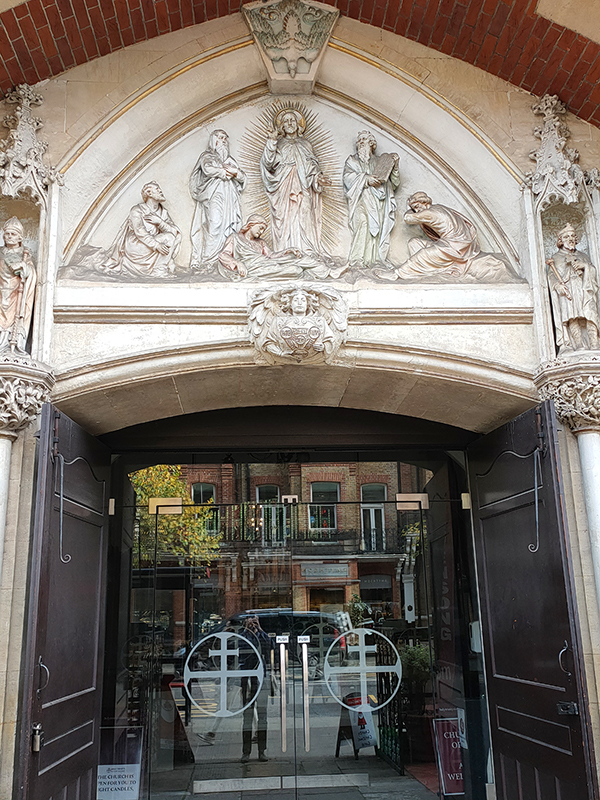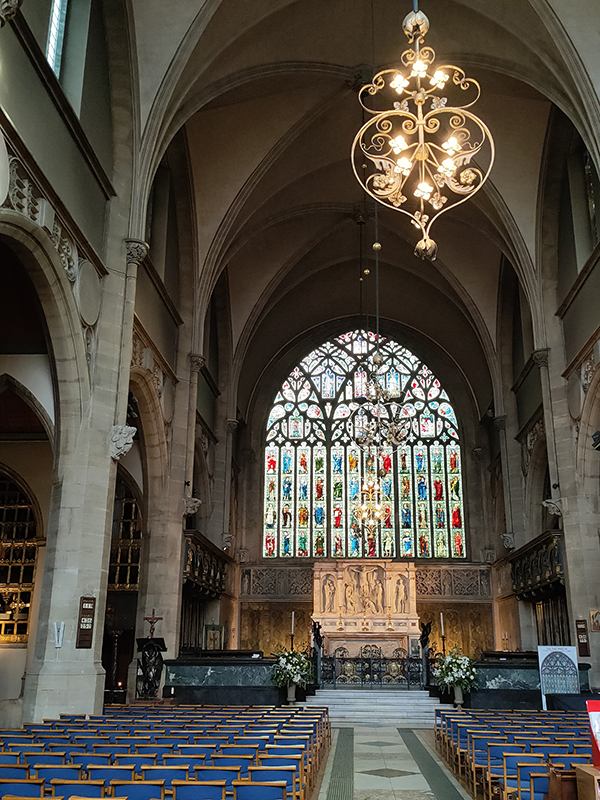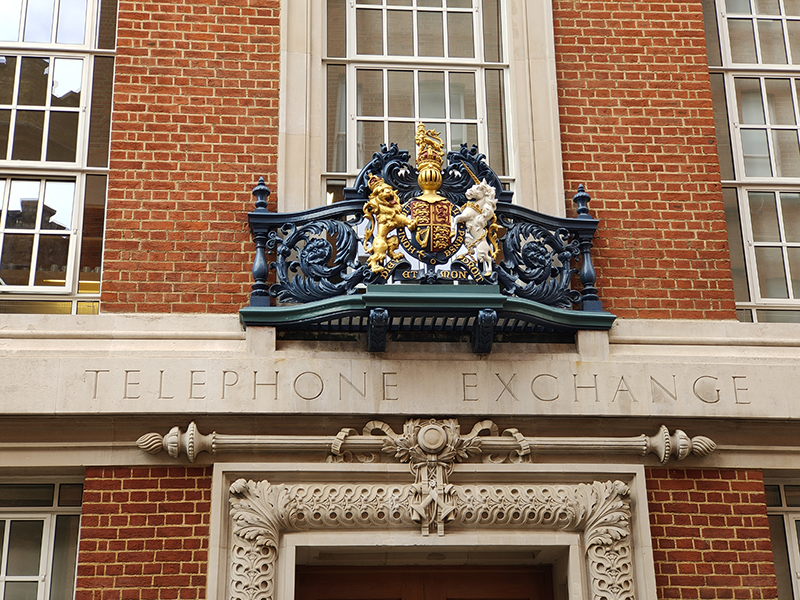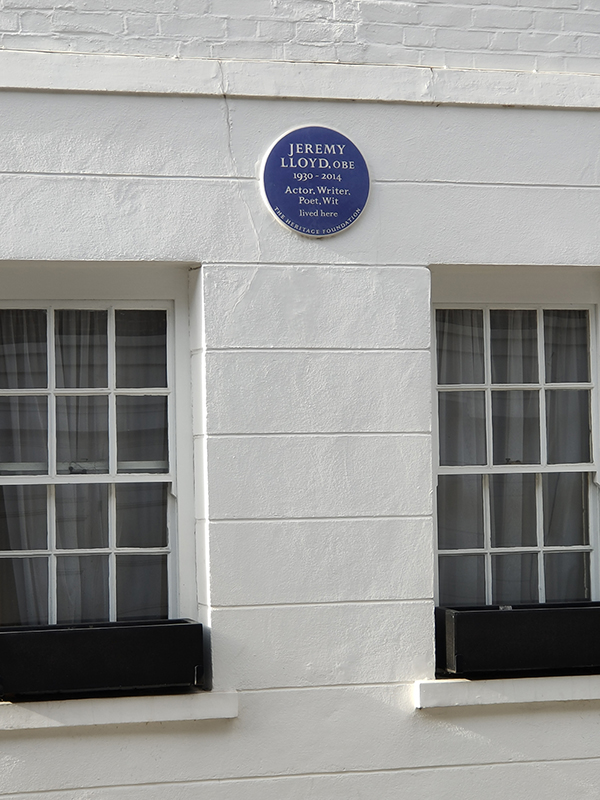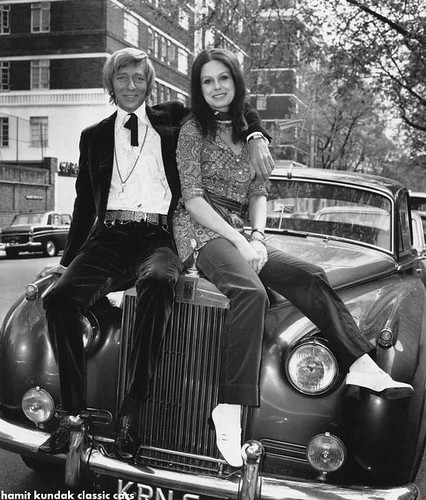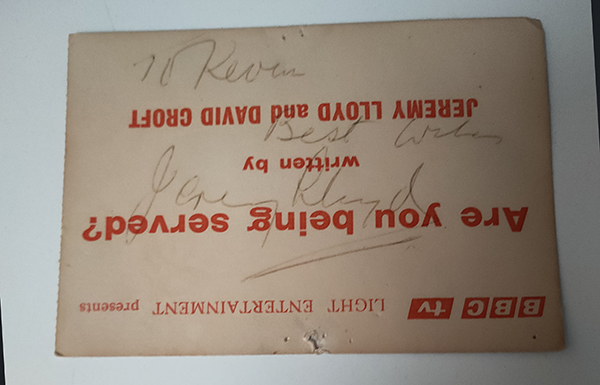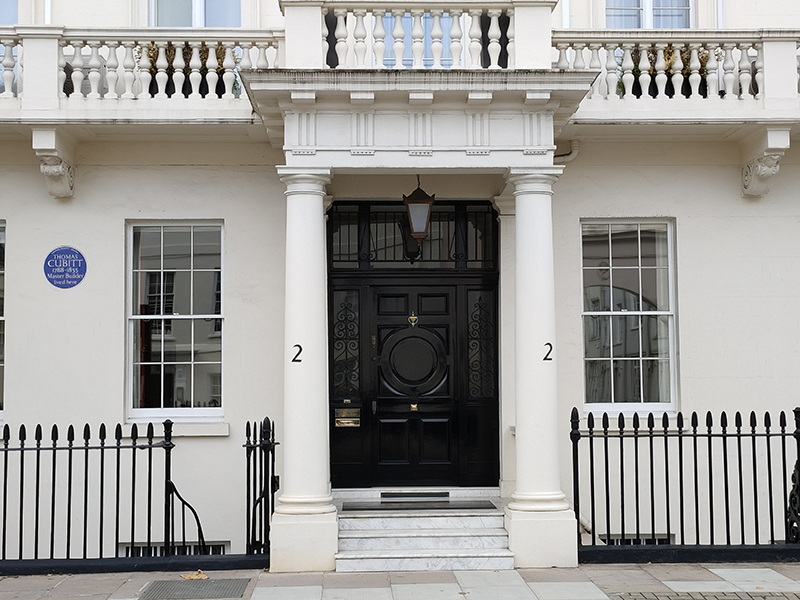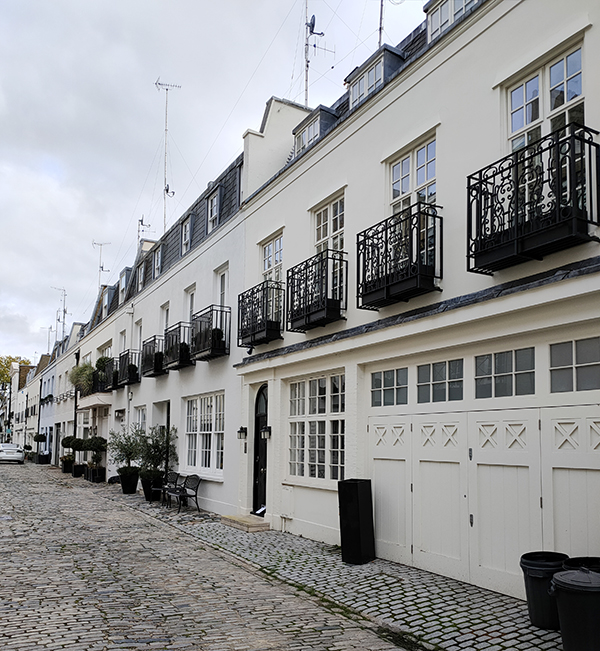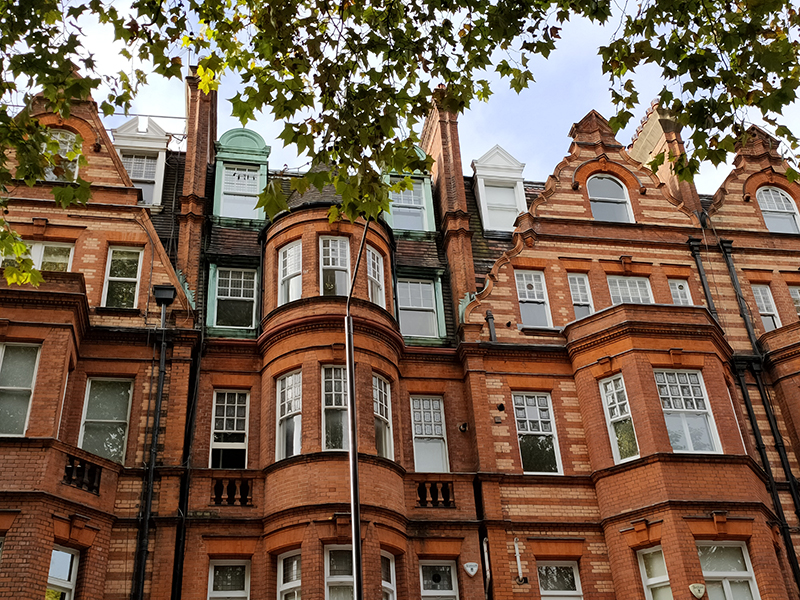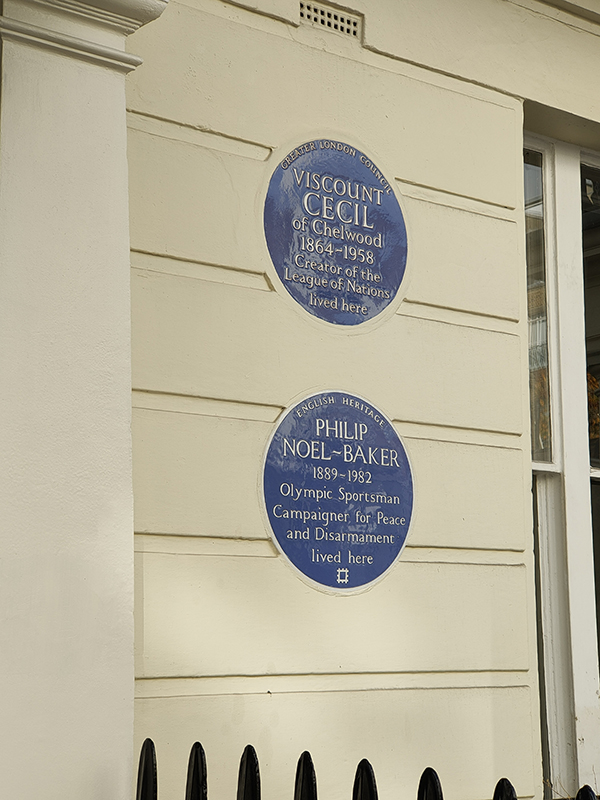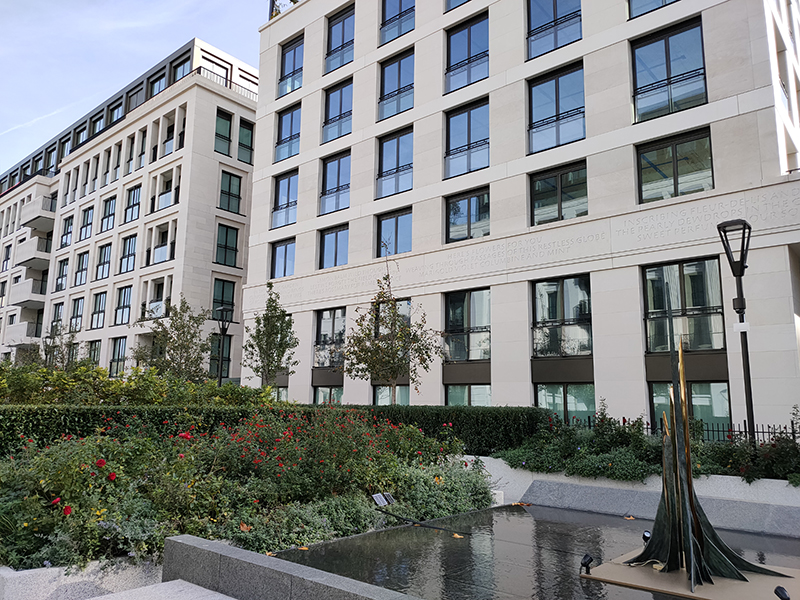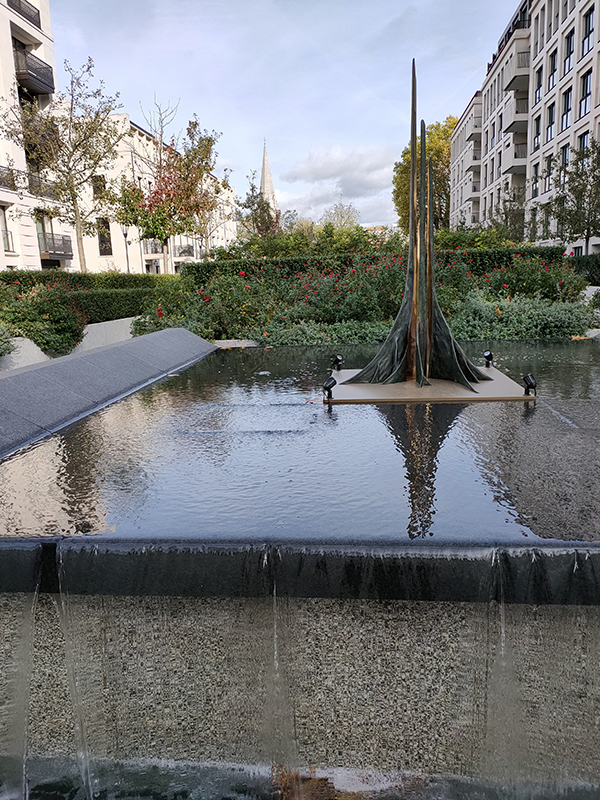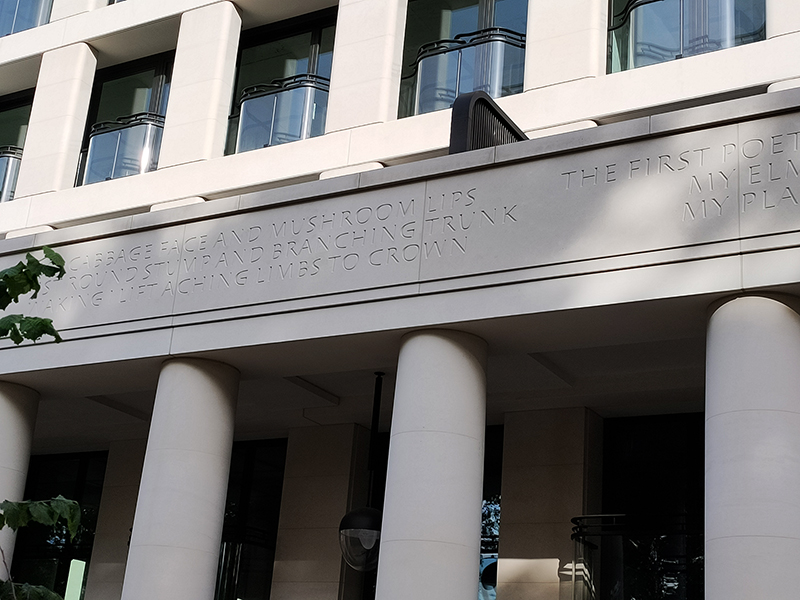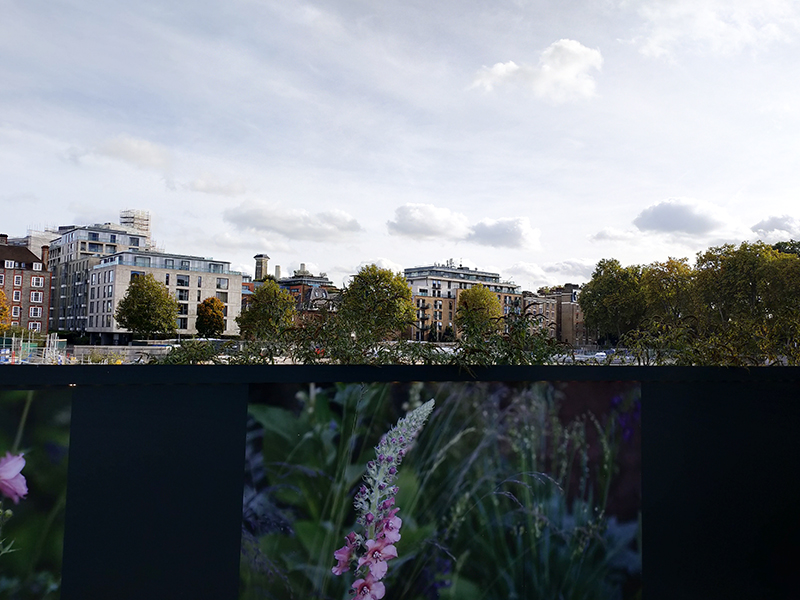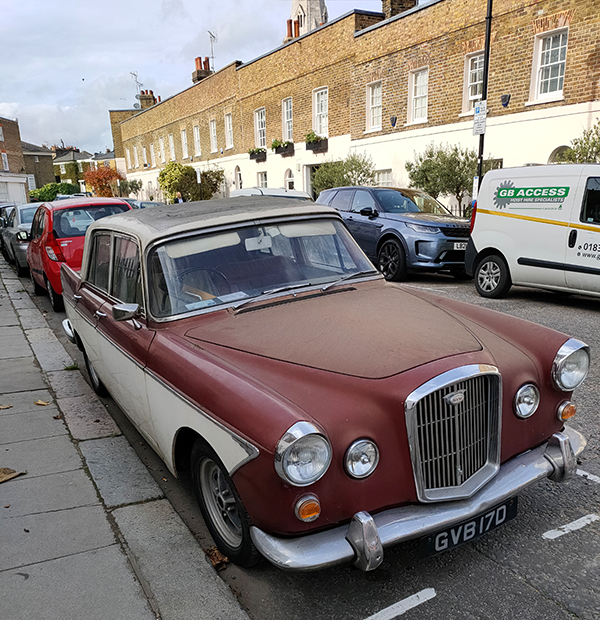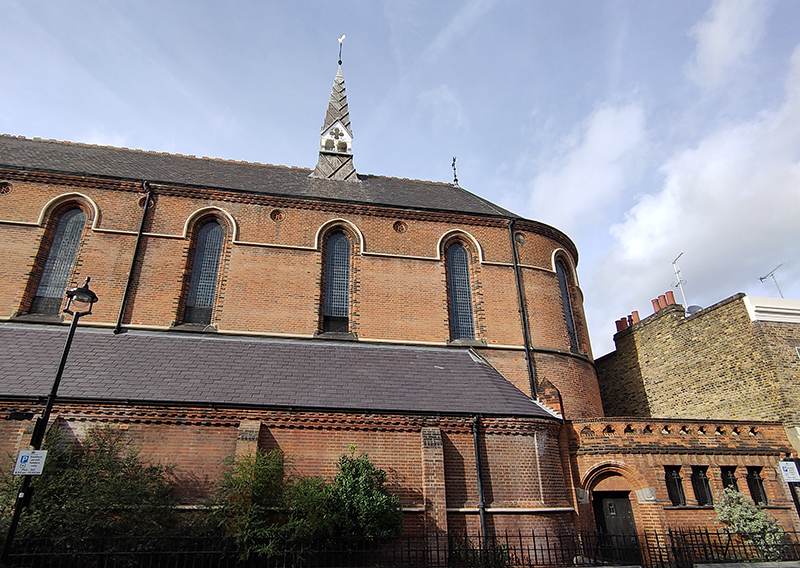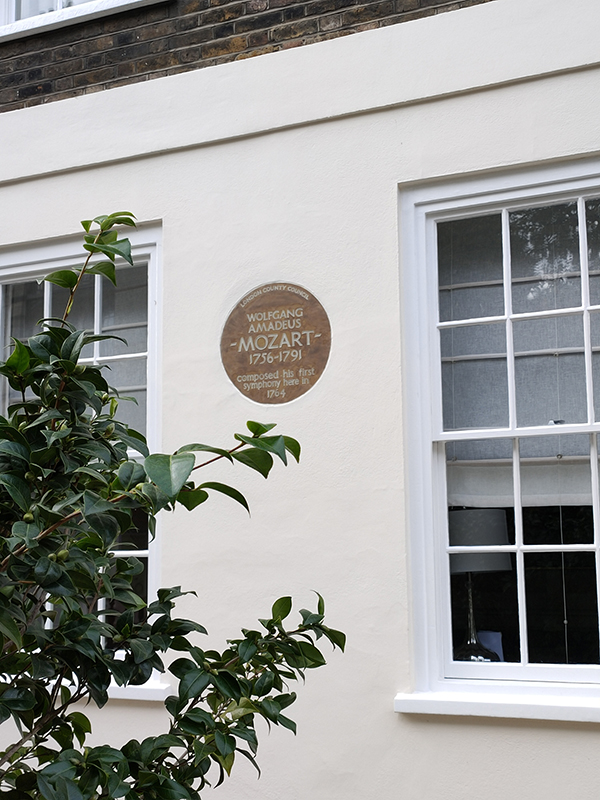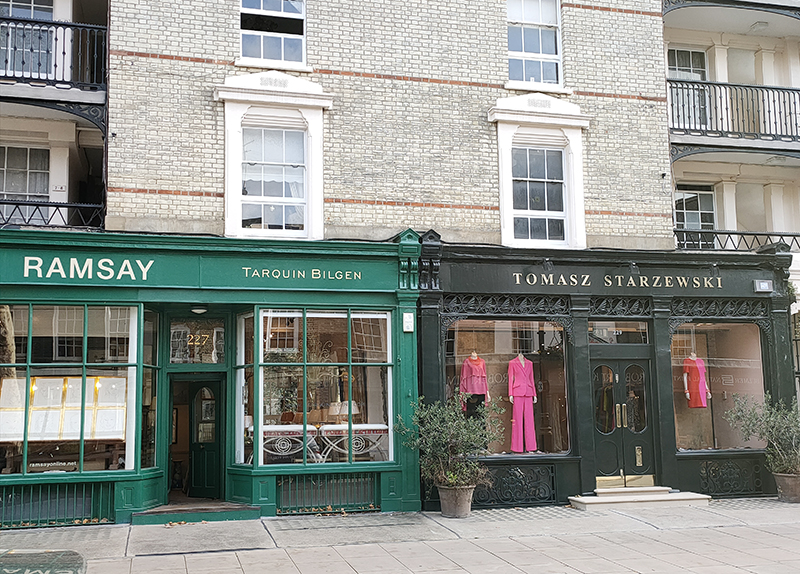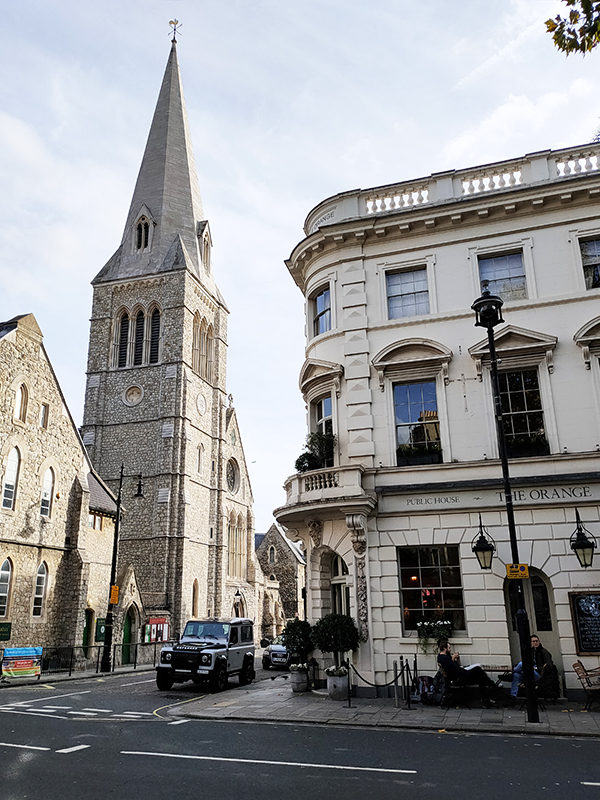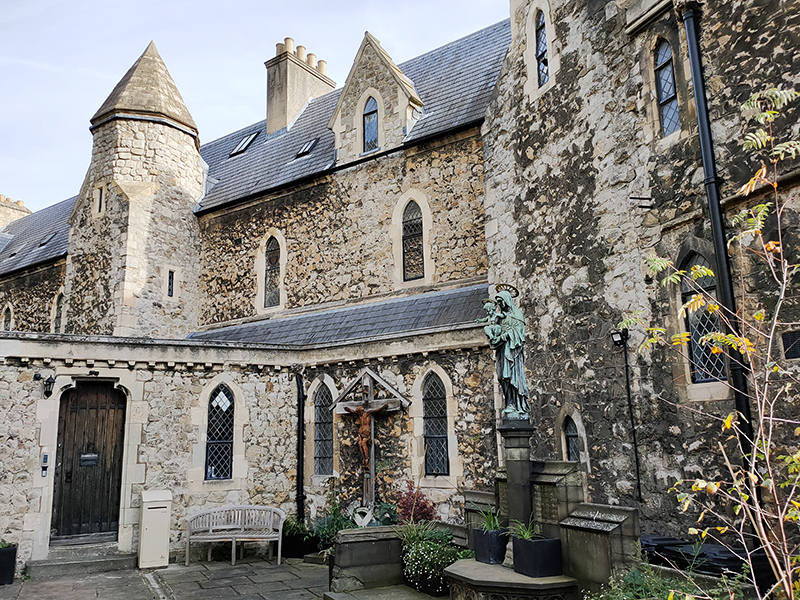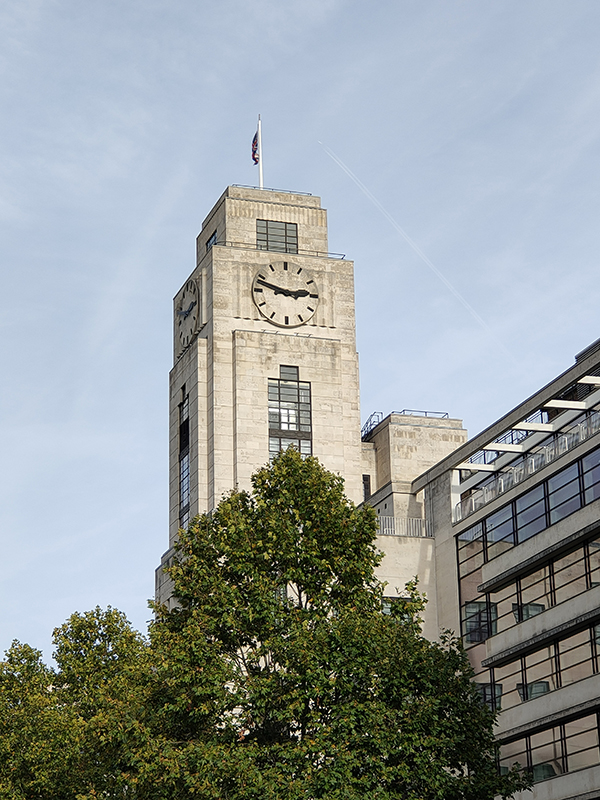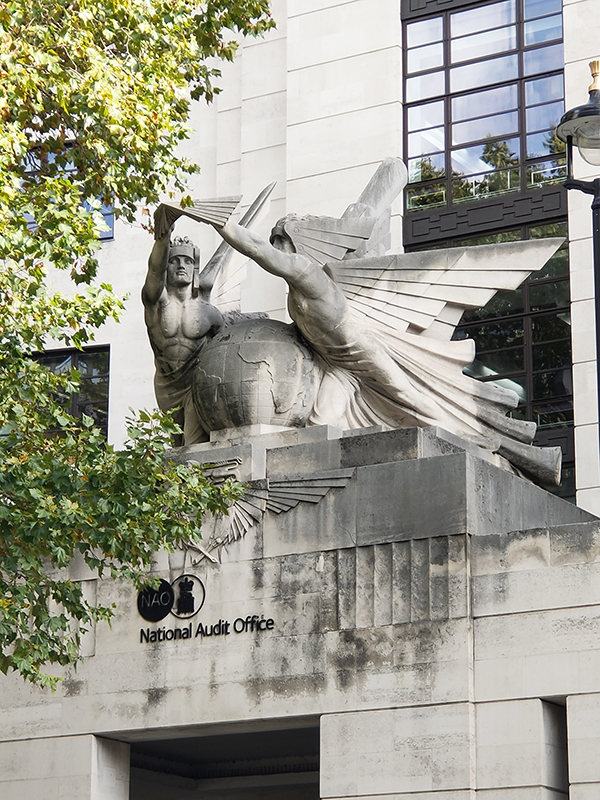This trip sees us returning to south-west London, specifically the area to the north, south and east of Sloane Square which is a nexus of Chelsea, Belgravia and Pimlico. Basically, about as swanky as it gets. It’s long been a desirable area for the well-off and well-known so there were more blue plaques on this jaunt than you can shake a yappy little handbag dog at. But we’ve also got theatrical history, an iconic department store, a clutch of churches, a few embassies and one of the largest building sites in the capital to offer you. It’s a bit of an epic tbh.
Right next door to today’s starting point, Sloane Square tube station, is the Royal Court Theatre. This red and moulded brick building with a stone facade in free Italianate style was designed by Walter Emden and Bertie Crewe and opened in 1888 as the New Court Theatre. Previously there had been a theatre on the opposite, west side of Sloane Square, a converted non-conformist chapel variously known as the New Chelsea Theatre, the Belgravia Theatre and the Royal Court Theatre between 1870 and 1887. By 1900 the “Royal” monicker had been reapplied to the new theatre and in the following few decades it played host to several of George Bernard Shaw’s plays. It ceased to be used as a theatre in 1932 and became a cinema from 1935 to 1940, until World War II bomb damage closed it. It reopened in 1952 and four years after that was acquired by The English Stage Company whose aim was to produce plays by young and experimental dramatists and “the best contemporary plays from abroad”. This intent was manifested from the outset with the premiere of John Osborne’s “Look Back In Anger” as the third production. Since then, the RCT has “courted” controversy on many occasions and played a key part in bringing about the abolition of theatre censorship laws in the 1960’s. Writers such as Caryl Churchill, Jez Butterworth and Sarah Kane have had multiple works given their first run here and “The Rocky Horror Show” debuted here in 1973. The building was Grade II listed in 1972.

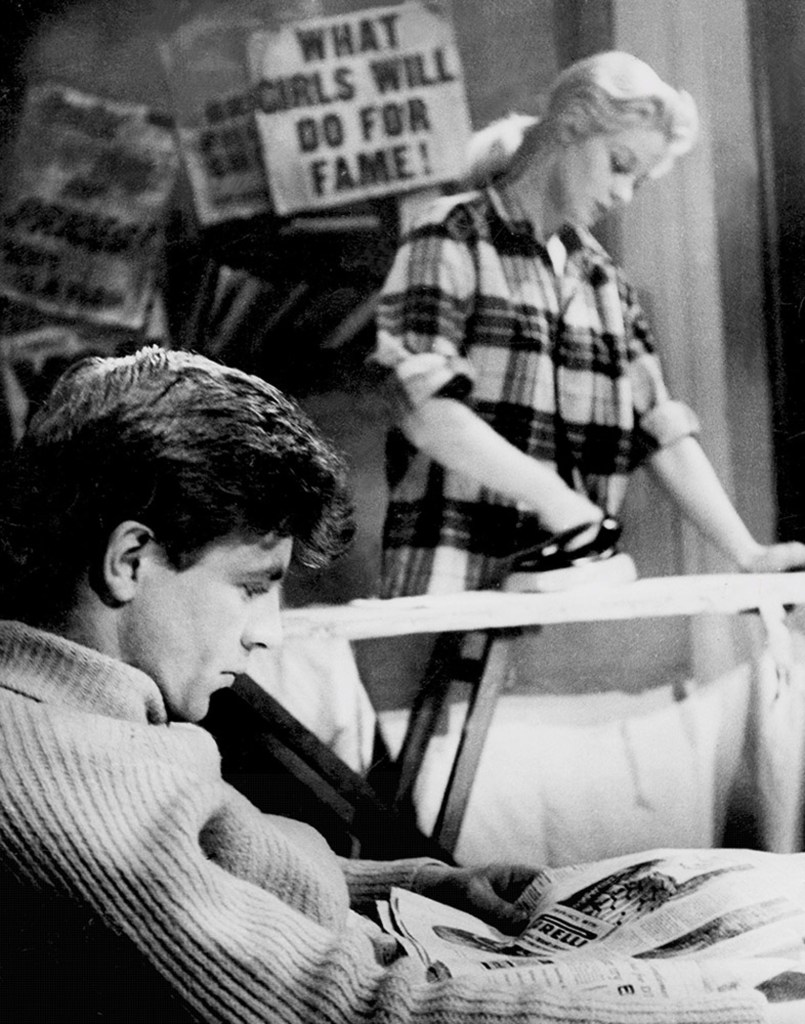
Sloane Square forms a boundary between the two largest aristocratic estates in London, the Grosvenor Estate and the Cadogan. Named after Sir Hans Sloane (1660–1753), an Anglo-Irish doctor who, jointly with his appointed trustees, owned the land at the time the square was laid out in 1771. In the 1980’s, of course, it became synonymous with the rise of yuppiedom and the Peter York-coined “Sloane Rangers”. These days the clientele for the Ralph Lauren and Tiffany stores is somewhat different I would imagine though you still have to watch out for marauding Range Rovers and where you step on the pavements.
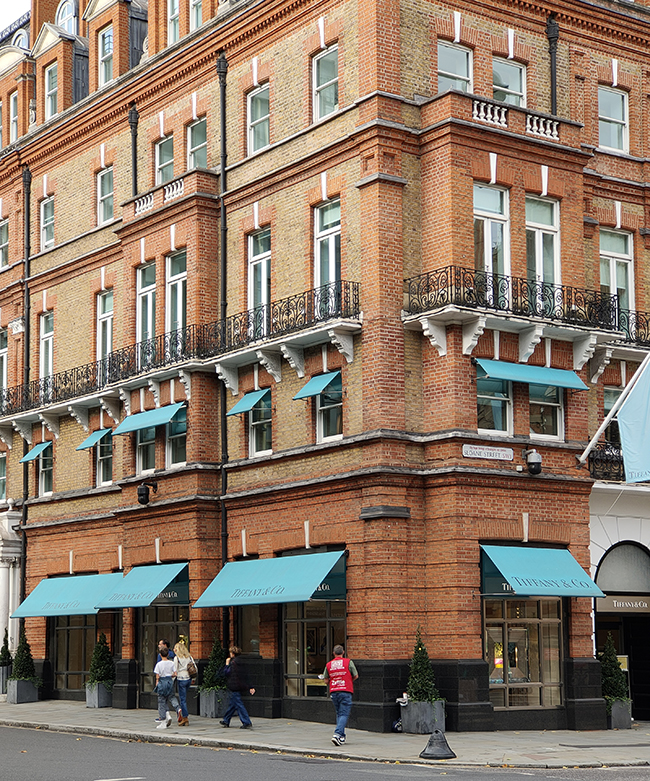

On the west side of the square, the Peter Jones department store still caters to its traditional demographic however. The shop is named after Peter Rees Jones (1842–1905), the son of a Carmarthenshire hat manufacturer, who opened a store here in 1877 on a 999-year lease from the Cadogan estate at £6,000 per year, the terms of which have never been increased (apparently). After Jones’ death in 1905 the store was bought by a certain John Lewis, who already owned a thriving business on Oxford Street. The present building was built between 1932 and 1936 to designs by William Crabtree of the firm of Slater, Crabtree and Moberly and is the first modern-movement use of the glass curtain wall in Britain. It is a Grade II* listed building. Despite being one of the flagship stores of the John Lewis partnership it has always retained the Peter Jones name.
Just off the square, on Sloane Street, stands Holy Trinity Church which, like the theatre, was constructed in 1888. The architect was John Dando Sedding (1838-1891) who was appointed by the 5th Earl Cadogan and his wife Beatrix. The church is notable for its impressive stain glass windows, chief amongst which is the great east window designed by Edward Burne-Jones (1833 – 1898) and installed by Morris and Company (which was founded by William Morris and members of the pre-Raphaelite movement including Burne-Jones). During WW2 the church was hit by several incendiary bombs causing considerable structural damage. Post-war there was considerable pressure to demolish rather than restore the building, and it was only saved from this threat by a campaign mounted by the Victorian Society and Sir John Betjeman who described the church as the Cathedral of the Arts and Crafts Movement. I should also note that at the time of visiting there was an extensive selection of Charity Christmas cards for sale and the two ladies on the till were very amiable.
It’s about time we got into some actual streets, so let’s kick that off by exiting the square northwards up Sedding Street. On the left we pass the Grade II listed Neo-Georgian Sloan Telephone Exchange which dates from 1924 and was designed by John H. Markham for HM Office of Works. These days it’s used for offices.
At the apex with Sloane Terrace stands the Cadogan Hall. This started life in 1907 as a new Christian Science Church designed by Robert Fellowes Chisholm, hosting up to 1400 worshippers. However, after planning permission for renovations was refused in 1996, the congregation moved on. The Hall was sold but fell into disuse until it was acquired by the Cadogan Estate in 2000 and four years later opened as a concert hall and the permanent base of the Royal Philharmonic Orchestra. Most of the concerts put on here are classical in nature but they also host (mainly) vintage pop and rock acts and jazz performers. In fact, I was due to attend a concert by the now 85-year old Ron Carter (one time bassist with the Miles Davis Quartet) and his current band in a couple of weeks’ time as part of the London Jazz Festival but sadly it’s been postponed until next year.
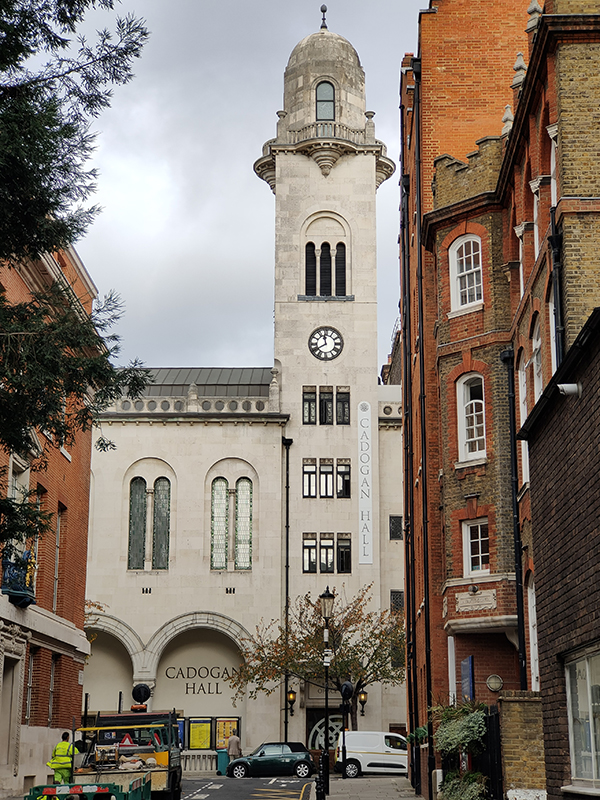

We turn left down to Sloane Street then turn briefly north before checking out the rear of the Hall on Wilbraham Place. Not an essential photo this next one but I do like these gates.
Returning to Sloane Street again via D’Oyley Street and Ellis Street we come across the first of today’s many blue plaques at no. 95, this one commemorating the English writer, traveller, political officer, administrator, and archaeologist, Gertrude Bell (1868 – 1926). Gertrude spent much of her life travelling around and mapping the Middle East and is principally known for her involvement in the establishment of territorial boundaries in the region following the break-up of the Ottoman Empire post-WW1. She was (alongside T.E Lawrence) a strong advocate for independent Arab states and was also opposed to the Balfour Declaration which determined the future of Palestine. Towards the end of her life she settled in her beloved Baghdad where she was President of the National Library and founded the Iraq Museum as a permanent home for the country’s rich collection of antiquities. I can thoroughly recommend the 2016 documentary about Bell’s life, Letters from Baghdad, in which quotations from her letters are read by Tilda Swinton.

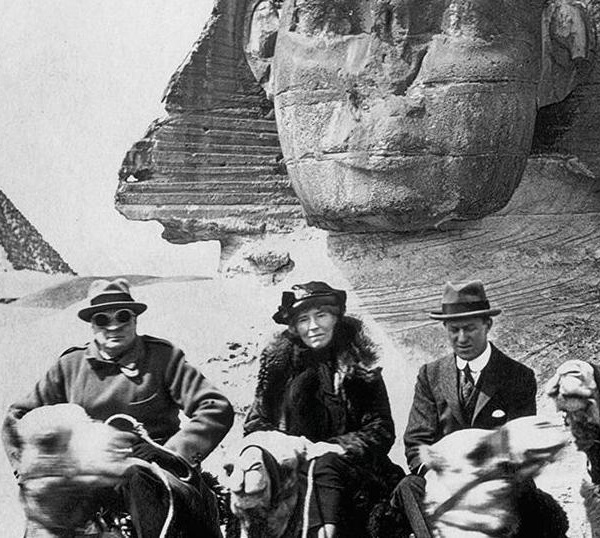
On reaching Pont Street we turn east and then south again down Cadogan Place where the houses, which distinguish themselves from other stuccoed terraces in the area by having mini gazebos on their first floor balconies, face the extensive eponymous private communal gardens. Both flats and terraced houses here are popular with foreign buyers, the average price of the former being upward of £3m and the latter £11m. There were some extremely expensive looking motors parked along the street but as I have little interest in cars you’ll have to use your imagination. The metal ironing board dumped beside the bollard outside no.69 strikes a nicely incongruous note.
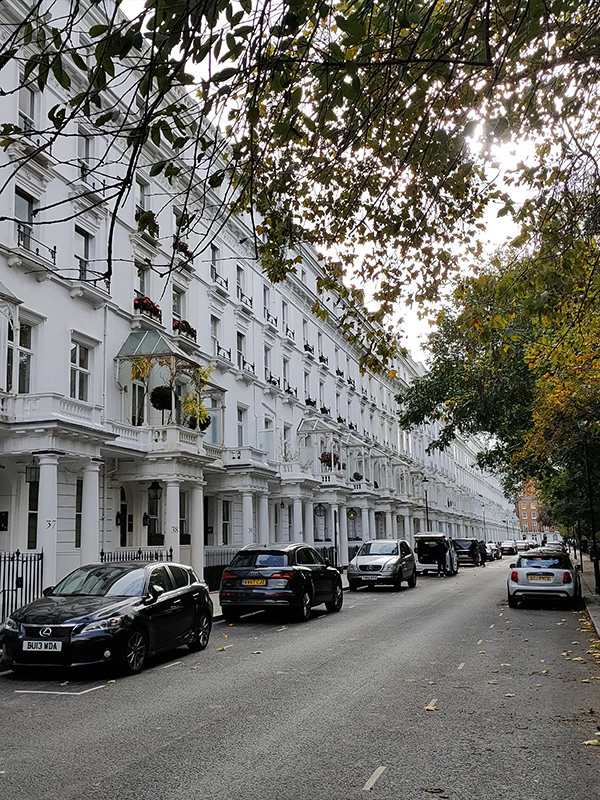
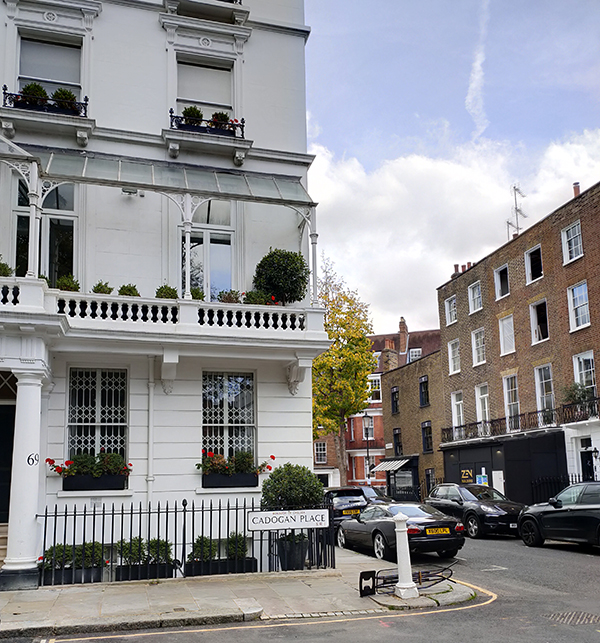
The next two blue plaques appear at nos. 30 and 44 Cadogan Place respectively. The former commemorates the actress Dorothy Bland (aka Mrs Jordan) (1762 – 1816) who was at least as famous for her love life as she was for her comic stage performances. In 1790 she became the mistress of the Duke of Clarence, later King William IV and during their a 20-year relationship bore him 10 children, all given the surname FitzClarence. The couple lived together as husband and wife, mainly at Bushy House in Bushy Park, Surrey, of which William was Ranger, until they finally separated in 1811. Dorothy moved to Cadogan Place the following year, living there for three years before retiring to France where she passed away within a year. The anti-slavery campaigner William Wilberforce (1759 – 1833) resided at no.44 but only for the last ten days of his life (it was his cousin’s house). One month after his death, the House of Lords passed the Slavery Abolition Act, which abolished slavery in most of the British Empire from August 1834.


Next street along, moving eastward, is Cadogan Lane which is largely comprised of mews houses which back on to the grand residences of its neighbour to the west. At no. 40 is an English Heritage (as opposed to GLC) blue plaque in honour of the writer and actor, Jeremy Lloyd (1930 – 2014). Lloyd is perhaps best known as the co-writer (with David Croft) of the sitcoms Are You Being Served and ‘Allo ‘Allo. In 1974 (at the age of 14) I went with my grandparents to see the recording of an episode of the former at the BBC’s White City studios. To my embarrassment, my grandma collared Jeremy for his autograph.
To the north Cadogan Place extends across Pont Street and here at no.4 Judy Garland died in June 1969 having accidentally overdosed on barbiturates. That house was eventually demolished in 2019.
No launderette of the day this time unsurprisingly so you’ll have to make do with London’s finest dry cleaners which we turn right past to get to Chesham Street where we immediately take a left into Chesham Place. It’s here you’ll find the German Embassy, or rather the 1970’s extension thereof. Amazingly, this won the Westminster City Council prize for architecture in 1978.
Next up is Lowndes Place where the composer, William Walton (1902 – 1983) lived. Among Walton’s orchestral works were marches he wrote for the Coronations of both King George VI and Queen Elizabeth II, entitled Crown Imperial and Orb and Sceptre respectively. Of the 13 film scores he composed those for the three Laurence Olivier-produced Shakespeare adaptions Hamlet, Henry V and Richard III are probably the best known. In 1934 Walton began an affair with Alice, Viscountess Wimborne, his senior by 22 years, which lasted until her death in 1948. Later that same year he met and married (in Buenos Aires) Susana Gil Passo who was 24 years his junior.
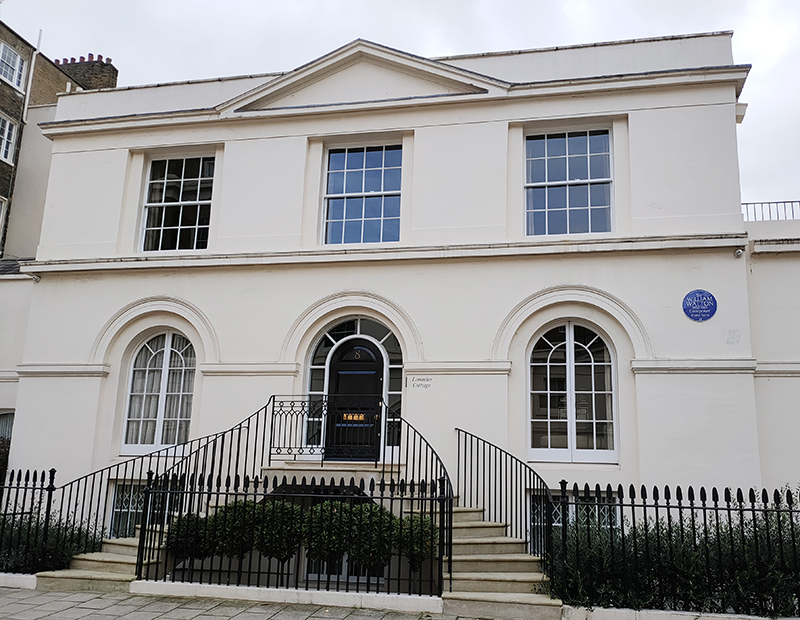
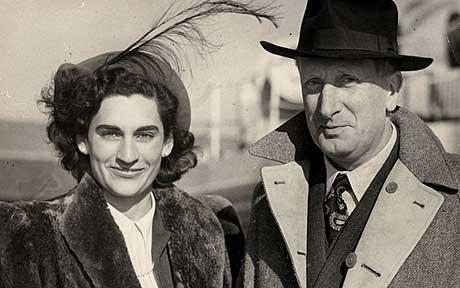
At the end of Lowndes Place we turn right into Eaton Place then right again up Lyall Street which was home to the master builder, Thomas Cubitt (1788 – 1855) who featured prominently in Day 69.
At the top end of Lyall Street we make a sharp left turn back down Chesham Street to the westernmost section of Eaton Place which plays host to the Chilean Embassy.
After turning off onto Lyall Street again we follow Eaton Mews North back to Eaton Place.
This next stretch of Eaton Place, going east, is the site of another embassy, that of Hungary. Though (and I’ll hate myself in the morning for saying this), judging from the number plate, that car would be more at home outside the German embassy.
We turn right beyond the embassy down Belgrave Place then switch back westward along a previously unexplored section of Eaton Square. The grandest of the houses along here (no.93), with its double set of columns, was once the residence of Stanley Baldwin (1867 – 1947). Baldwin served as Prime Minister on three separate occasions, May 1923 to January 1924, November 1924 to June 1929, and June 1935 to May 1937. During the last of these stints the country was ruled by three different monarchs, George V, Edward VIII (although he was never crowned) and George VI. These days, of course, it’s hard to imagine a Conservative PM seeing out a full term of office let alone remaining as leader after losing even one election.
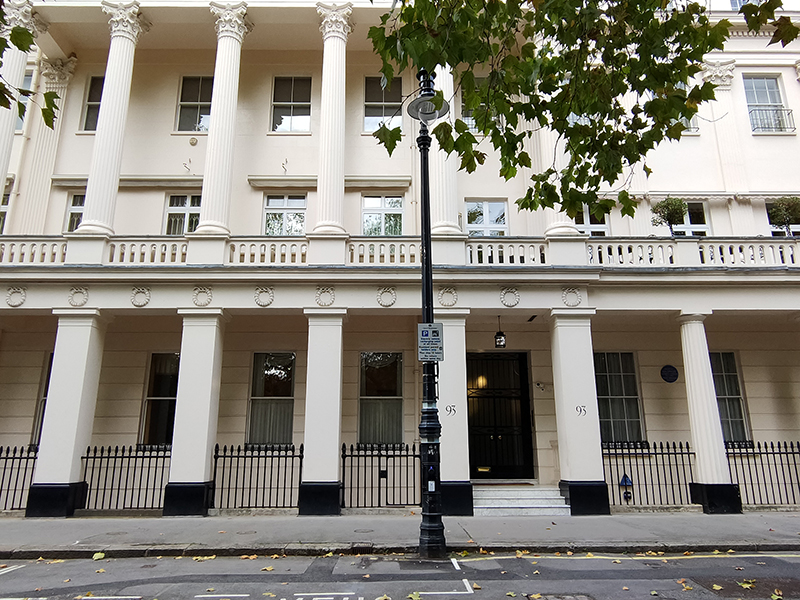

Just a few doors away, at no. 86, lived Edward Wood, 1st Earl of Halifax (1881 – 1959). He held various ministerial posts during the first and last of Baldwin’s three terms of office and in between time served as Viceroy of India from 1926 to 1931. Neville Chamberlain appointed him as Foreign Secretary in 1938 and he initially gave his support to the appeasement of Nazi Germany. However, after Hitler’s invasion of Czechoslovakia, he became a proponent of resistance to further German aggression. On Chamberlain’s resignation early in May 1940, Halifax effectively declined the position of Prime Minister as he felt that Winston Churchill would be a more suitable wartime leader. Following the retreat from Dunkirk, Halifax proposed trying to reach peace terms with Hitler using Mussolini as an intermediary. He was overruled by Churchill after a series of stormy meetings of the War Cabinet and was subsequently eased out of the Foreign Office, becoming UK ambassador to the USA from 1941 to 1946.


On the corner of Eaton Place and West Eaton Place is the house where Frederick Chopin gave his first London performance in 1848. West Eaton Place runs into Eaton Terrace where the Antelope pub is in full bloom.


Beyond the pub, Cliveden Place takes us all the way back to Sloane Square. Before we finally leave the square via the southern section of Sloane Street I’ll just quickly mention the two monuments on the island. The Venus Fountain was created in 1953 having been designed by sculptor Gilbert Ledward. The fountain itself depicts the Goddess Venus, and on the basin section is a relief which depicts King Charles II and Nell Gwynn by the Thames. At the other end, the Chelsea War Memorial is a slightly off-centre cross made of Portland Stone with a large bronze sword affixed to its west face.
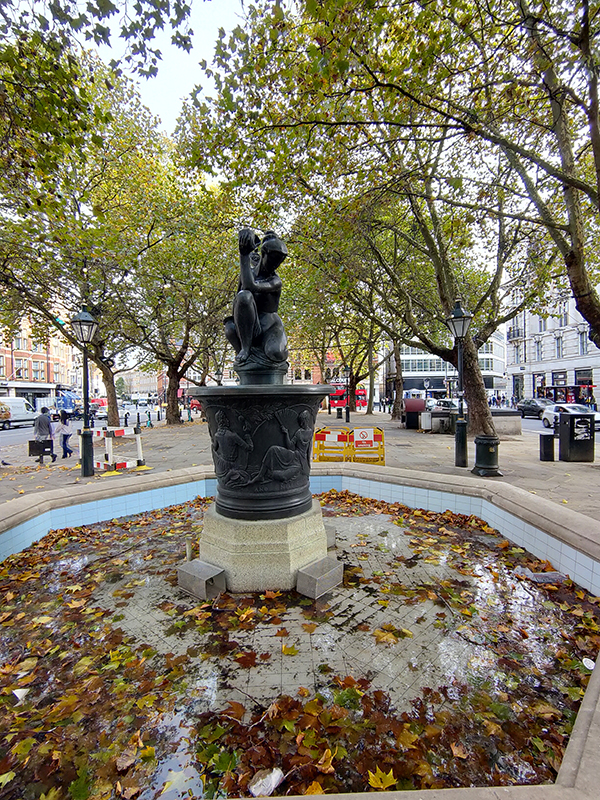
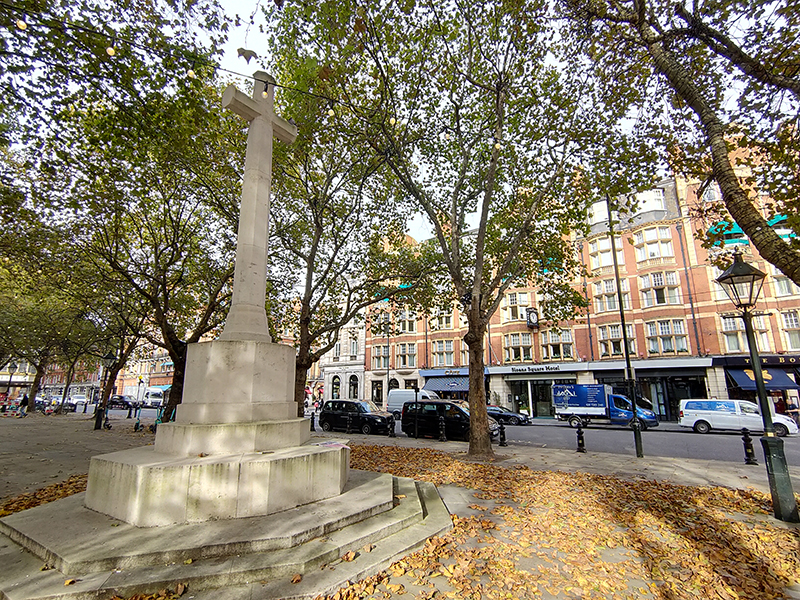
This section of Sloane Street, which runs down to join Chelsea Bridge Road, is lined on its west side by impressive Dutch style red-brick buildings built in the 19th century at the instigation of Earl Cadogan.
A good run of streets now before we get to the next point of interest (yet more of those blessed blue plaques !). So we’re working our way east to get to South Eaton Place and taking us there are Sloane Gardens, Holbein Place, Whittaker Street, Bourne Street, Caroline Terrace, Eaton Terrace, Eaton Gate, Lyall Street and Eaton Mews West. On reaching no.16 South Eaton Place we are presented with two plaques. The topmost is in honour of Robert Cecil, 1st Viscount Cecil of Chelwood (1864 – 1958) one of the creators of the League of Nations post-WW1 and accordingly winner of the Nobel Peace Prize in 1937 (though I’d rate that as the very definition of a pyrrhic victory given what happened two years later). The one underneath celebrates Philip Noel-Baker (1889 – 1982) the politician, diplomat, academic, athlete, and renowned campaigner for disarmament. He carried the British team flag and won a silver medal for the 1500m at the 1920 Summer Olympics in Antwerp, and (how’s this for coincidence) also received the Nobel Peace Prize (in 1959). So far, he is the only person to have won both an Olympic Medal and a Nobel Prize.
We’re heading back west to the top end of Chelsea Bridge Road next by means of Chester Row, Graham Terrace and Holbein Mews.
The 12-acre site to the east of Chelsea Bridge Road between Pimlico Road and Ebury Bridge Road was formerly occupied by the Chelsea Barracks. The original barracks, designed to house two battalions of infantry, were completed in 1862 and comprised a long and monotonous brick structure broken by towers in the centre. It also included a chapel which still remains (and which we will come to later). In the late 1950s these original buildings were demolished and in June 1960, construction started on new barracks primarily consisting of two 13-storey concrete tower-blocks which were used to accommodate four companies from the Guards Regiments.
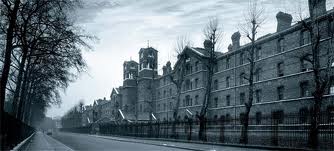
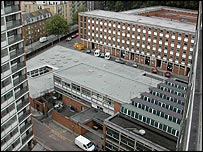
In 2005 the then government announced that Chelsea Barracks would be sold and three years later the site was vacated with the troops transferred to the Royal Artillery Barracks at Woolwich. In the meantime, a sale to the Qatar Investment Authority for £959m had been agreed subject to Westminster Council’s stipulation that 50% of any residential units should be affordable housing. The original development scheme proposed, a contemporary design with a series of copper, glass and concrete pavilions, by Rogers Stirk Harbour + Partners met this requirement but was withdrawn after criticism from Prince Charles. A new masterplan – designed by Squire and Partners – was approved by Westminster Council in 2011. Under this scheme the site would be redeveloped in multiple phases over several years and would incorporate 448 residential units including 123 affordable units (27%), as well as a new leisure centre, NHS medical centre, community centre and local shops. Phases 1 to 3 have now been completed and ground has been broken on phase 4.
As you can see the results are a long way short of awe-inspiring and, to make matters worse, the buildings facing on to Chelsea Bridge Road have some of the naffest poetry I’ve ever encountered etched in their walls. Cabbage face and mushroom lips my arse ! The Qataris are also noticeably more comfortable advertising their involvement in this project that others around the capital. According to one of the security guards the penthouse apartments have a guide price of around £120m.
Anyway, moving on, we follow Chelsea Bridge Road down to its eponymous river crossing then backtrack to the start of Ebury Bridge Road. On the corner here is a plaque marking the flat where Jerome K. Jerome (1859 – 1927) wrote his timeless Three Men In A Boat in 1889. This humorous account of a two-week boating trip on the Thames upstream from Kingston to Oxford has been filmed numerous times including the 1956 screen adaptation, with David Tomlinson as J., Jimmy Edwards as Harris and Laurence Harvey as George, as well as German and Russian language versions.

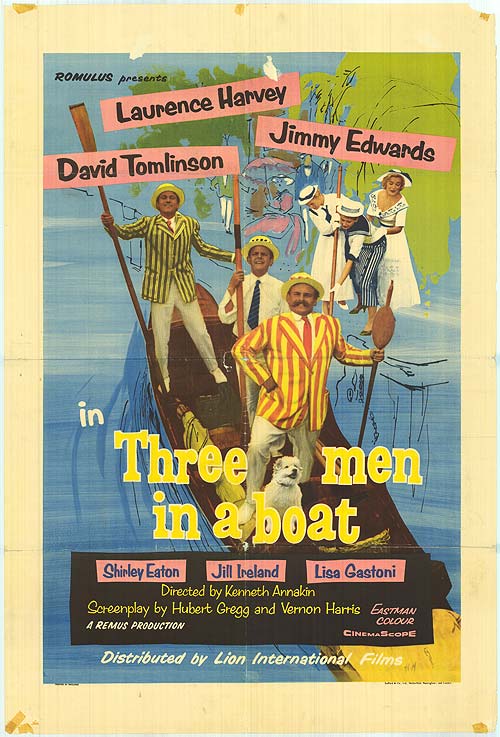
Heading east along Ebury Bridge Road, with a quick detour into Gatcliff Road, yet another massive development on the south side is at least trying something different with these colourful (but temporary) work and community spaces.
I mentioned earlier that I’m no car buff but who doesn’t love an old Wolseley like this one on St Barnabas Street.
St Barnabas Street intersects Ranelagh Grove where you’ll find that chapel referred to above. As noted, this example of mid 19th Century Romanesque-Byzantine style with Venetian Gothic elements is the only thing that remains of the original barracks. As part of the current development this Grade II listed building was fully restored, including a new bell cast by the world’s largest foundry, John Taylor & Co., and is now home to the Prince’s Foundation (as in Charles of course) – funny that !


Our route takes us back west briefly next, Bloomfield Terrace leading into Pimlico Road which we follow down past Dove Place and Whistler Square (phase one of the Barracks development) before doubling back as far as Passmore Street. En route we pass the southern end of Holbein Place where there is a memorial to WW2 SOE agent Yvonne Cormeau (1909 -1997). In 1940 her husband, who had enlisted in The Rifle Brigade and been sent back to the UK after being wounded, was killed when their London home was bombed. Yvonne’s life was saved by a bathtub which fell over her head and protected her but not her unborn baby. Shortly thereafter she joined the WAAF (to “take her husband’s place) and in 1943 was recruited by the SOE where she was swiftly promoted to Flight Officer. Later that year she was parachuted into southwestern France to be the wireless operator for the SOE network there; a role she carried out until the liberation of France 13 months afterwards. Before dedicating herself to the SOE she placed her 2-year old daughter with a convent of Ursuline nuns in Oxfordshire.
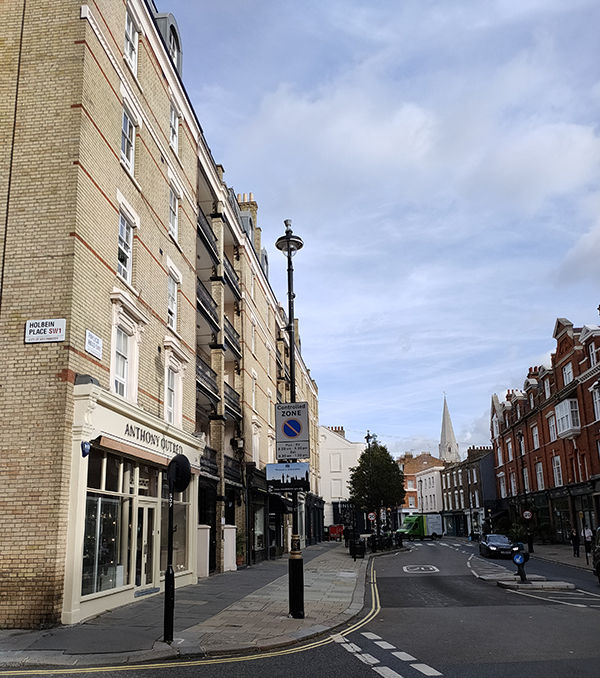

Once on Passmore Street we take an almost immediate right turn into Bunhouse Place which takes us back onto Bourne Street. In Ormonde Place, a discreet a relatively recent private residential development on the west side there is a somewhat incongruous statue of Hercules (about which I can find no further information).
St Mary’s Anglican Church on Bourne Street was built ‘quickly and cheaply’ in 1874, with the intention of providing ministry to the poor living in the nearby slums of Pimlico. Sadly, it appears there is little else of note to be said about it.
We pass the church to the south along Graham Terrace and make our way back to the intersection of Eaton Terrace and Chester Row for today’s pub of the day. The Duke of Wellington is devoid of other clientele when I enter but as I work my way through a (pretty good) fish finger sandwich and glass of Sauvignon there is a flurry of fresh arrivals (mostly tourists).
We make our way back along Chester Road then drop down South Eaton Place to Gerald Road to continue east. Here we find the last (blue) plaque for today commemorating the residence at no. 15 between 1930 and 1956 of the playwright, composer, director, actor, singer and noted wit, Sir Noel Coward (1899 – 1973). During this period, he penned two of his most successful stage works, Private Lives and Blithe Spirit and collaborated with David Lean on the patriotic WW2 films In Which We Serve and This Happy Breed. Subsequently, in 1945, he also provided the (uncredited) narration for Lean’s Brief Encounter.
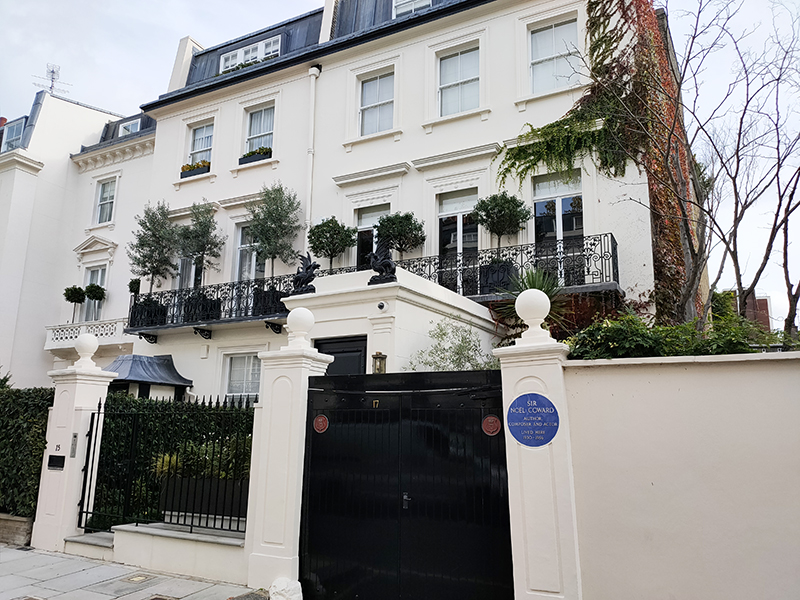
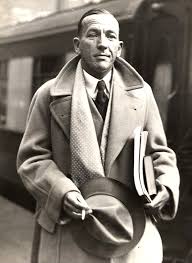
From Gerald Road we turn right onto Elizabeth Street then head back west along Ebury Street. Next left, Semley Place, leads into Ebury Square and off the south-western corner of the square, where the very short Avery Farm Row adjoins with Pimlico Road, stands the Memorial Fountain to Richard Grosvenor, 2nd Marquess of Westminster. Created in an Italian-renaissance style in around 1869 this incorporates four enamel mosaics by the renowned Italian glassmaker and artist, Antonio Salviati.
We make our way back up the west side of the square into Cundy Street. I was shocked to learn (from another security guard) that the splendid 1950’s estate, designed by T.P Bennett with a definite nod to Art Deco, is scheduled for demolition. Grosvenor Estates, which owns the site has received approval from Westminster Council to replace the existing 160 flats (44 of which are leased by the council) with new housing including 88 affordable homes, senior living housing for up to 170 people and 75 open market homes. These will be framed by new and improved green spaces and introduce a community hub, food store and cinema to the area. To my mind (and that of the existing residents who fought unsuccessfully against the plans) this could have been achieved without doing away with the current flats.
Back on Ebury Street is a today’s very final plaque (honestly). It’s one of the rare sepia brown London County Council ones from pre-WW2 and it commemorates the house in which Wolfgang Amadeus Mozart (1756 – 1791) composed his first symphony in 1764 (at the age of eight !).
I don’t tend to focus on retail establishments very much but sometimes you just can’t help yourself.
Ebury Street ends at Pimlico Road where we turn east briefly to find ourselves at the top end of St Barnabas Street. On the corner here is the Grade II listed Orange Pub and Hotel (formerly the Orange Brewery) which dates from 1845-6. And across St Barnabas Street is the Church of St Barnabas which is a year younger, having been completed in 1847 to the designs of Thomas Cundy (Junior). It was one of the earliest Ritualistic churches, and the first in London in which all pews were free (charging for pews was normal practice at the time). The building was listed Grade I in 1958.
To finish off today (at last) we follow Ranelagh Grove and the last section of Pimlico Road onto Ebury Bridge Road and head up towards Victoria past the National Audit Office. This seminal example of Art Deco architecture was probably the last hurrah for that iconic style of building (at least as far as the UK is concerned). It was constructed as The Imperial Airways Empire Terminal and opened in June 1939 just months before the outbreak of WW2. Designed by the architect Albert Lakeman it has a symmetrical facade with a 10-storey central clock tower and wings curving forward to form a crescent shape. As well as being used by Imperial Airways for ticketing and checking in passengers, it was also used by the airline as a Head Office. The location was chosen because the Air Ministry insisted that Southampton had to be used as base for flying boat services, and this was the only site that backed on to what was then Southern Railway station. Over the years the name of the building changed in synch with changes to the national airline, becoming first the BOAC Terminal and then the British Airways Terminal. The building closed to passenger use in 1980, partly due to pressure on BA to cut costs and also because it became redundant as Heathrow Airport gained direct transport links. It was officially listed a year later and since 1986 has been occupied by the National Audit Office, the independent Parliamentary body with responsibility for auditing central government departments, government agencies and non-departmental public bodies. The sculpture above the entrance, “Wings Over The World” designed by Eric Broadbent, is the only remaining external clue as to the building’s original use.


